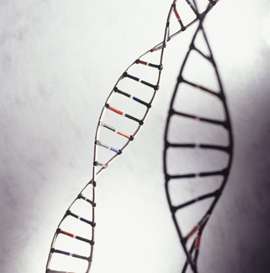Genetic cause of cleft palates

Some children are born with cleft palates and, of those children, some have an asymmetrical face and a malformed ear. A team of scientists led by Berlin-based researcher Enno Klußmann of the Max Delbrück Center for Molecular Medicine (MDC) has taken an important step towards discovering the genetic causes of this condition, known as Goldenhar syndrome.
A protein called GSKIP plays a crucial role in embryonic development. The researchers shut down the gene responsible for GSKIP in a mouse (knockout model), which then developed a cleft palate and severe respiratory problems. "It is the first time that a specific function in a living organism has been ascribed to this protein," says Klußmann who led the study of Veronika Anita Deák from his working group. The research was published in the online edition of the Journal of Biological Chemistry.
In the study, the scientists used the conditional knockout process, in which a biological switch is introduced into a gene (Cre/lox) that shuts it down. Once they had established the function of the GSKIP protein in mice in this way, the researchers compared the genes responsible for it in mice and in humans. They found a high degree of correlation with humans who suffer from Goldenhar syndrome. However, while many of the knockout mice did not survive birth owing to respiratory problems, humans born with a cleft palate face less serious complications: physical malformation can be corrected with surgery and respiratory problems can also be controlled.
More information: Veronika Anita Deák et al.: The A-kinase anchoring protein GSKIP regulates GSK3β activity and controls palatal shelf fusion in mice, Journal of Biological Chemistry, www.jbc.org/content/early/2015 … M115.701177.full.pdf




















